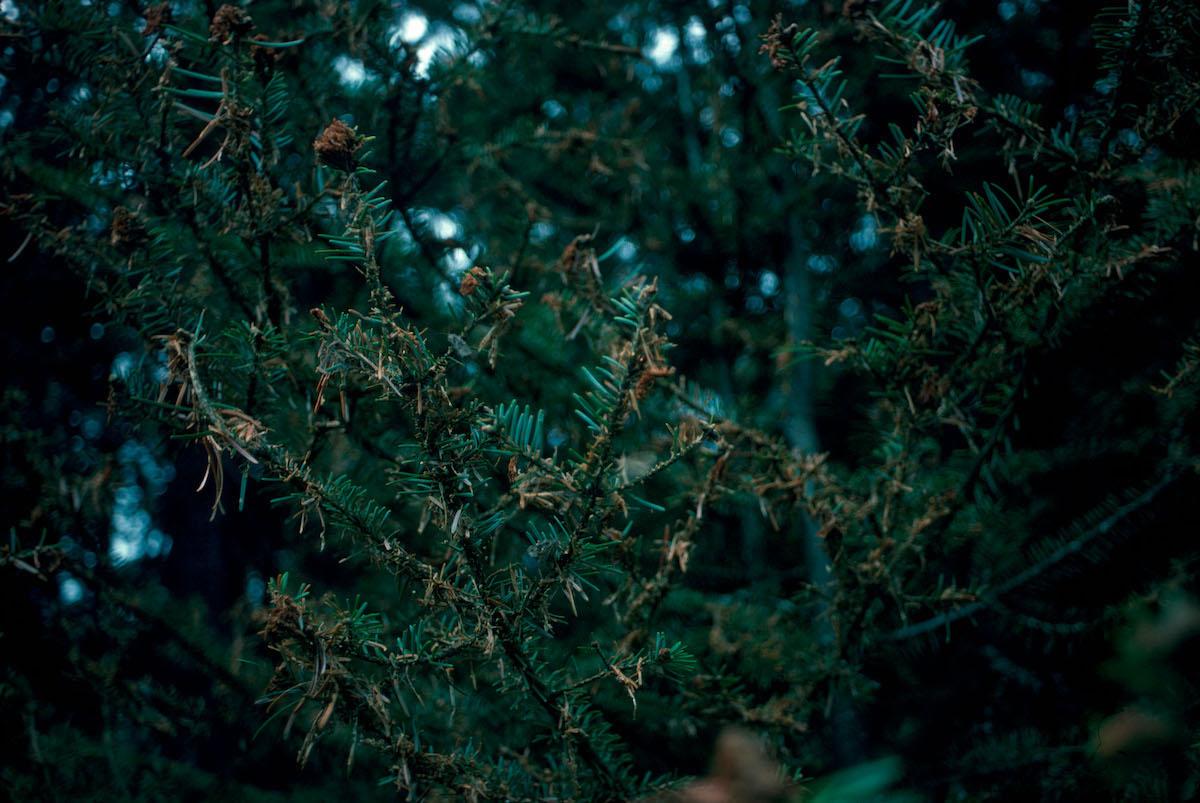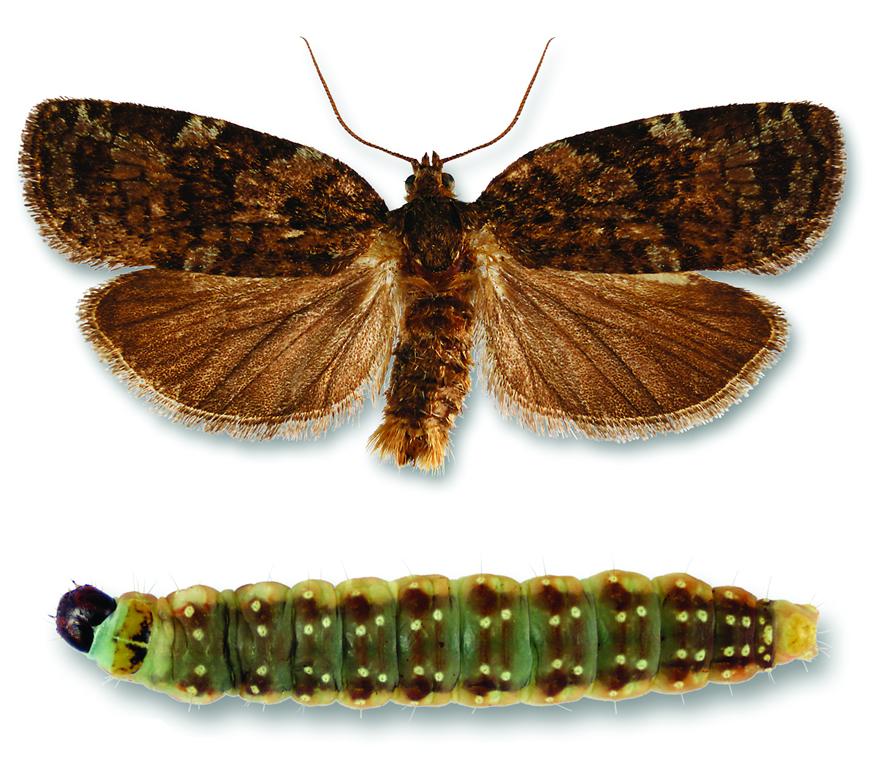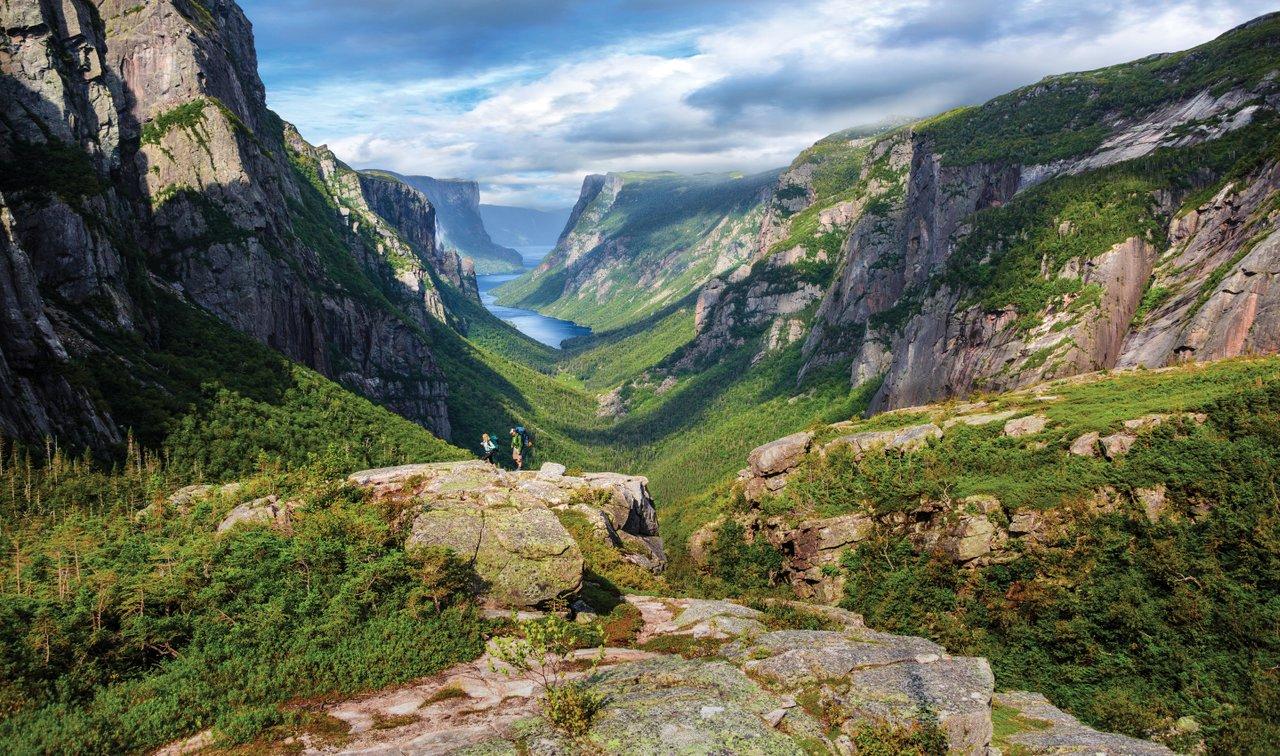
A spruce budworm crawls along spruce needles/Natural Resources Canada, Canadian Forest Service
To spray or not to spray?
It’s not usually a question that Parks Canada has to grapple with, but the Newfoundland and Labrador government has asked Gros Morne National Park to allow aerial spraying to quash an emerging spruce budworm outbreak.
If the park says no, a full-blown outbreak may develop and kill large tracts of mature balsam fir and white spruce forest, visitors may see unsightly rust-coloured and then grey trees and wonder about what appears to be a dead or dying forest, and the outbreak could spread outside the park and affect local wood harvesters and the province’s forest products industry. But insect outbreaks are an important part of natural forest cycles and a budworm outbreak, combined with ongoing moose management, could also open up gaps in the canopy so new trees can grow.
Then again, if the park says yes, Parks Canada could be seen as ignoring its mandate to champion ecological integrity, the decision could set a precedent for other parks and the forest could ultimately become vulnerable to more severe insect outbreaks in coming years. As well, the pesticide spraying would happen in late June or early July, would cause people to worry about potential effects, and would take place for at least two years — and probably longer.

A file photo from an unknown location that shows what defoliated fir trees look like/Natural Resources Canada
The province wants to spray about 22 per cent of Gros Morne — 400 of its 1,805 square kilometres (154 of 700 square miles) — in the Spruce Budworm Early Intervention Control Program. The park is talking to Indigenous groups, partners and stakeholders, hosting three virtual public meetings this week and asking for emailed feedback by April 18. It expects to hear from people who live in its enclave communities, environmental groups and the forestry and tourism sectors.
“It’s a very significant act to ask a national park to participate in an insect-control program, especially of a native species,” acknowledges Roger Steadman, a project manager with Parks Canada who is helping Gros Morne through the decision-making process. He says there is no middle ground in this situation. “It really is a case of you either you do it or you don’t do it.”
The (eastern) spruce budworm (Choristoneura fumiferana) is a moth native to North America that mainly feeds on balsam fir and white spruce and occasionally on red and black spruce. It devours needles and sometimes staminate (male) flowers and cones, killing trees within five years.
Canadian Forest Service research shows that adult moths mate and lay clusters of eggs on tree needles in July and August. Newly hatched larvae spin cocoons in protected areas on the tree for the winter. Come spring, the larvae emerge to feed on new foliage using needles to build protective silken shelters against predators. By late June, they’ve finished most of their feeding and the damage and defoliation becomes visible. Finally, in July and August, budworm moths emerge from pupae and lay eggs on the foliage.

A spruce budworm pupa makes a tasty meal/Natural Resources Canada, Canadian Forest Service
Spruce budworms usually exist in reasonable numbers, but outbreak cycles happen every 30 or 40 years. They were first spotted on the island of Newfoundland in 1942 and the last outbreak in the 1970s caused a tree loss equal to a 25-year supply of wood to the forest industry. The current Canadian outbreak started on the north shore of the St. Lawrence River in Quebec in 2006 and has harmed more than 9.6 million hectares (almost 24-million acres) of forest while spreading east. New Brunswick has held the budworm at bay by spraying since 2014 and the moth hasn’t crossed into Nova Scotia or Prince Edward Island.
But the budworm has been carried on nightly winds from Quebec to the west coast of Newfoundland where its numbers have been slowly growing since 2017. Gros Morne staff first spotted patches of defoliation around Rocky Harbour and other spots last summer. Last July, the provincial government treated about 35,583 hectares (almost 88,000 acres) of forest along the Great Northern Peninsula “to protect the region’s forest resource from future outbreaks of the destructive insect and reduce the need for full treatment programs in coming years.”
The province sprayed Btk, a biological insecticide approved by Health Canada that has been used for forest pest management for three decades. Bacillus thuringiensis (Bt) is a bacterium found naturally in the soil. Of the more than 20 varieties, the kurstaki variety is used to control caterpillars — hence the name Btk.
Here’s the catch — Btk only kills young larvae, not eggs, pupae or adults. It must be eaten by the caterpillar so the bacterium can multiply and release lethal toxic substances in the digestive system. Not all caterpillars hatch at the same time and so multiple sprayings are usually needed.

An eastern spruce budworm adult moth (top) and caterpillar (bottom)/Natural Resources Canada
“It’s a naturally occurring soil bacterium that gets activated when it’s digested,” explains Steadman. “And the feeding only takes places at the caterpillar stage on the needles. It will impact other caterpillar species that eat needles.”
Btk isn’t toxic to humans and doesn’t harm mammals, birds, fish, amphibians or most insects, although it can kill the caterpillars of other moths and butterflies. The British Columbia government notes that regular and organic food growers use this biological insecticide, it’s exempt from pesticide residue tolerances on food crops and it typically breaks down in three to seven days. It’s sprayed from low-flying, GPS-controlled aircraft.
For Gros Morne, treatment areas could include — or deliberately exclude — campgrounds, day use areas, trails, domestic timber harvest blocks, highland forest and areas around enclave communities. It promised to create buffer zones to avoid surface water.
Although Parks Canada makes ecological integrity its first priority in managing parks, policy would allow it say yes to spraying to “prevent serious adverse effects on neighbouring lands” as long as Gros Morne's ecosystem isn’t impaired and no reasonable alternative exists.

Hikers in Gros Morne's Western Brook Pond fjord/Barrett & MacKay, Newfoundland and Labrador Tourism
At the first of Gros Morne's three virtual public hearings on Monday, Darroch Whitaker, ecosystem scientist for Parks Canada's Western Newfoundland and Labrador Field Unit, noted that insect disturbances in boreal forests are a natural phenomenon. While “there could be winners and losers in the short term” if the park says no to spraying, other species will adapt, endure and even benefit. But there are many competing factors to consider with his complicated request, and he flagged concerns that budworms are appearing in Gros Morne’s highlands and lowlands. Somewhat unique to the province, many Newfoundlanders and Labradorians have wood stoves in their homes or winter cabins and get annual permits to cut cords of wood.
People attending the virtual session wondered whether spraying might affect the park's UNESCO status and tourism season, how Btk might harm them, and what locals and tourists should do when the planes are out spraying. As one area resident who experienced budworms in his garden last summer noted, walking down Gros Morne’s trails and “having a large number of budworms falling out of the trees is not a pleasant thing.”
Gros Morne sent out an information bulletin about this urgent issue on March 31, just after the provincial election wrapped up. Once the consultation period ends, Parks Canada will release a What We Heard report and hopefully decide by April 30 whether to reject the government’s request or whether it’s willing to study it further. If it moves ahead, park staff will develop an Integrated Pest Management Plan, complete a Detailed Impact Assessment and hold a 30-day open consultation period before making a final decision by early June.
“These are very tight timelines,” concedes Steadman, who is also park warden supervisor for Prince Edward Island National Park. “We are trying not to give any impression that we are leaning towards one way or another, because we really aren’t. The starting point is that this is not a normal request and not something normally done, but it is something we have to consider.”

People are captivated by the Tablelands area of Gros Morne National Park/Newfoundland and Labrador Tourism
Established in 1973, Gros Morne is renowned for its unique and varied geography and dramatic topography shaped by periods of glaciation over the last two million years. It boasts diverse coastlines, serpentine barrens in an area called the Tablelands, an arctic-alpine environment, extensive wetlands and boreal forest. It protects two natural regions — the Western Newfoundland Highlands and the eastern portion of the St. Lawrence Lowlands.
UNESCO gave Gros Morne World Heritage Site status in 1987 because of its “exceptional natural beauty “and “outstanding examples of major stages in the earth’s geological evolution."
Gros Morne’s 2019 management plan details how it’s an anchor attraction for the province’s tourism industry, with nearly 60 per cent of visitors usually coming from elsewhere in Canada and 29 per cent from around the world. (The province has been closed to most Canadians, outside of the Atlantic travel bubble, during Covid-19 pandemic.) The biggest draw is the Tablelands, “a piece of the Earth’s upper mantle until pushed onto the Earth’s surface as continents collided 500 million years ago.” The area was once the lower most layer of an ancient ocean floor and is one of the few spots in the world “where a sample of the Earth’s mantle is well exposed, preserved and accessible.”
Gros Morne’s final virtual public consultation is April 14 at 10:30 a.m. (NT). People can register — or email comments until April 18 — at [email protected].

 Support Essential Coverage of Essential Places
Support Essential Coverage of Essential Places



